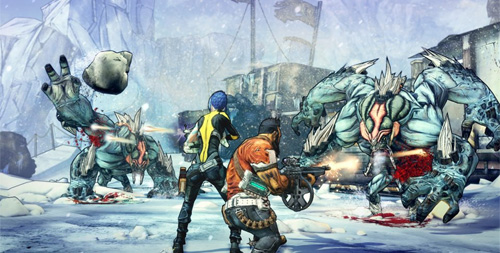In today’s edition of Did You See This Wednesday, we’re going to be talking about RPGs.
As goofy as it sounds, one of my favorite parts about any RPG is watching my damage number creep up as I progress through the game. Whether this number is ratcheting upward through new equipment or because I’ve hit a new level seems to matter little — what matters is that sweet, sweet damage total. I get kind of addicted to it. This is most evident in Borderlands 2 (which we’ll be streaming tonight), a game that bombards you with more numbers than a Mathletics competition, both in and out of combat.
In an interesting article on Joystiq, writer Rowan Kaiser takes a look at Why RPGs Must Be Transparent About their Mechanics. For good or ill, RPG mechanics are starting to bleed into every genre imaginable, with games like Mass Effect turning into a seamless blend between action game and pen-and-paper classic.
But in many of these games, all the number crunching is happening under the hood, in a way that the player doesn’t get to see. Skyrim, for instance, doesn’t exactly show you just how much damage you’re dealing, save for a hit point bar. Kaiser argues that gamers need to see this kind of feedback, so that they understand that their decisions and play-style have meaning.
But more interestingly, Kaiser even breaks down into the why of numbers, and why they seem to work so well in a fantasy setting in particular, in that they help give definition to fantastical elements. And because of this, we accept it in a way that we wouldn’t accept it in say, Halo or Call of Duty.
From the article:
This is part of why RPGs go so well with fantasy specifically, and speculative fiction generally. By moving outside of real-world rules, a game can be transparent and abstract without being ridiculous. Want to say that a certain clan of vampires are all ugly and have certain rules applied only to them? You can do that in speculative fiction.
It’s funny that such a simple thing can make or break an experience for me. I’m not sure if it comes from my roots of turn-based Japanese RPGs, where all of your numbers are right there to see, but part of my brain connects with this kind of combat better when I can see the difference something makes. If all I witness is more damage in a health bar, I’m less inclined to be excited over upgrades and new skills.
So what do you guys think? Do you like when a game does the number crunching out in the open for you to see? Do you even care? What are some games that have done it well both ways? Go!
Source – Joystiq


There’s no better feeling than getting to the point in a game when you hit for 9999.
This is one of my biggest sticking points about the Mass Effect series. Getting a 30% damage boost to Incinerate is nice, but it never actually looks like it’s doing anything. That could be because the enemies scale so well with you, but I’d like to see some hard numbers when I buff a stat like that.
Even the weapon mods in ME3 felt kind of extraneous because they weren’t having any solidly visible effect outside of knocking off a bit more health.
Nick, its better when you consecutively hit 9999.
I do prefer the open number-crunching in video games. I want that math all up in ma face! >_<
Ahh, the visual feedback. I actually turned on the damage view on Team Fortress 2 because it’s 100 times more helpful and satisfying to see the damage numbers in real time. When you get those much needed crits, seeing visually over the enemy a -150 is the most satisfying feeling every, and it helps based off which class they play. For instance if you get a -150 over a Heavy you know, he’s at half health because the Heavy’s HP when full is 300.